Time to read: 6 min
Are you ready to scale up from 3D printing to injection molding? Then it’s time to tailor your part design for a process that uses metal tooling and has its own unique design requirements. This article begins with some injection molding basics and then explains how to optimize your part design to reduce tooling costs and avoid defects. You’ll also learn what to do if your part has an especially complex geometry, and there’s even a section about urethane casting — in case you’re not quite ready for plastic injection molding.
No matter what plastic production method is best for your project, Fictiv can help you every step of the way. We offer 3D printing, injection molding, and urethane casting (plus CNC machining) and provide design for manufacturing (DFM) assistance along with your quote. Keep reading to learn about scaling up from 3D-printed prototypes to injection mold-ready designs. Then create a free Fictiv account to get started on your manufacturing journey. We make complex parts at ridiculous speeds!
How Does Injection Molding Work?
The tool in injection molding, the injection mold, has two main parts: the core and the cavity. The parting line is where the two parts meet, and the direction of their movement is called the mold pull. In the image below, the line on the side of the toy soldier shows where the two halves of the mold came together.
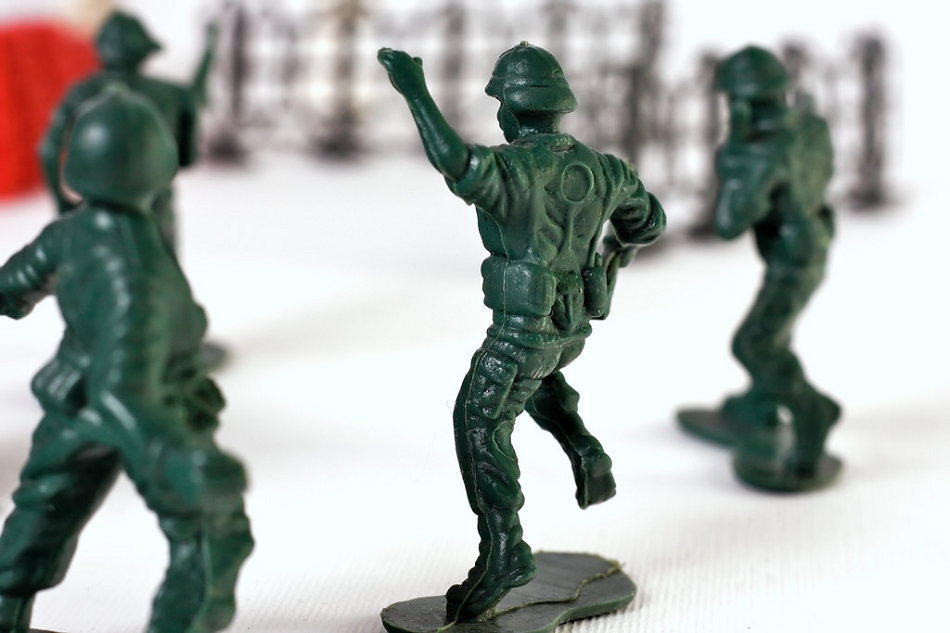
During the injection molding process, molten plastic (the charge) enters a nozzle and then passes through a sprue and runner system. This molten plastic then enters the mold through openings called gates. After the plastic cools, the molded part is ejected from the tool, typically with ejector pins.
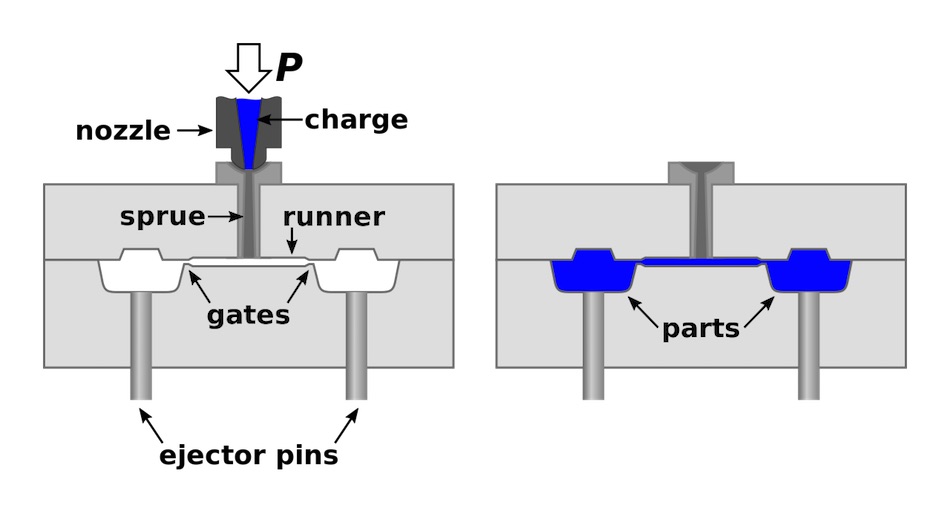
Injection molds vary in size and complexity, so let’s start with a small but simple example: a red solo cup. Half of the mold forms the cup’s interior and the other half forms the cup’s exterior. Inside the tool, there’s a cone of plastic that protrudes from one side of the mold into the other.

Red solo cups are a simple design, but what if you want to create a coffee cup? What do you do about the handle? The two halves of the injection mold can’t come together in a straight parting line. One solution is to incorporate slides, a type of action, for part removal. Yet this adds complexity and costs.
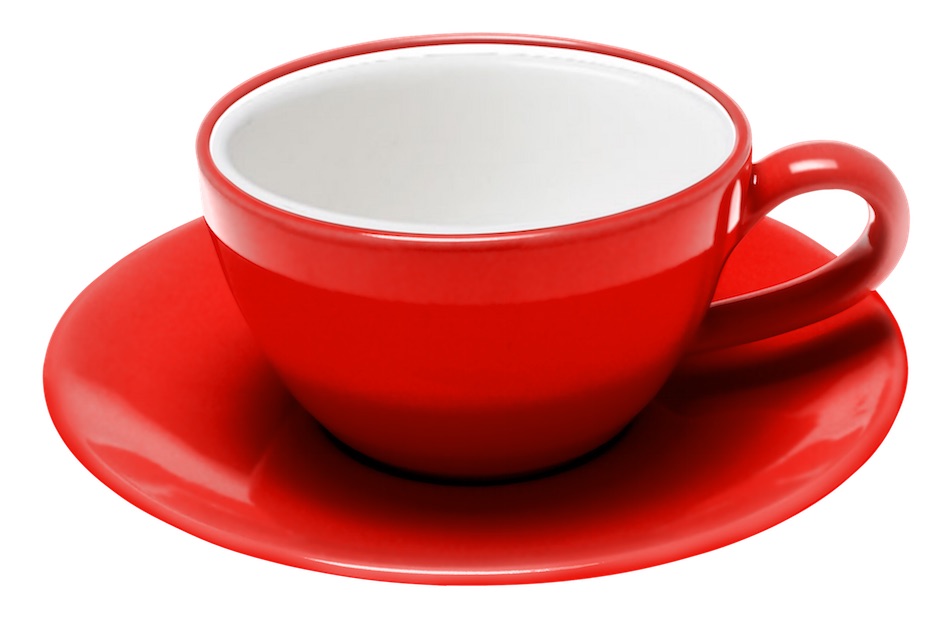
So, whenever possible, design your parts in a way that makes injection molding easy and inexpensive. Sometimes, however, you just can’t avoid complex geometries, but design for manufacturing (DFM) experts can help you find the right solution.
Our Injection Molding Design Guide has helpful insights, too.
How to Reduce Tooling Costs and Avoid Injection Molding Defects
When you’re designing a part for injection molding, try to visualize which surfaces will be made by the top of the mold and which surfaces will be made by the bottom. Then determine where the two halves of the mold will meet. It takes some practice and DFM assistance to do this, but it’s worth the effort.
Avoid Unnecessary Undercuts
Injected molded parts with recessed features called undercuts are more difficult to eject from the tool. This adds costs and complexity to your project, and undercuts that are too deep may be especially hard to remove. Yet, some product designs need undercuts for a fastening point or locating edge, which are essential to the design and can’t be removed.
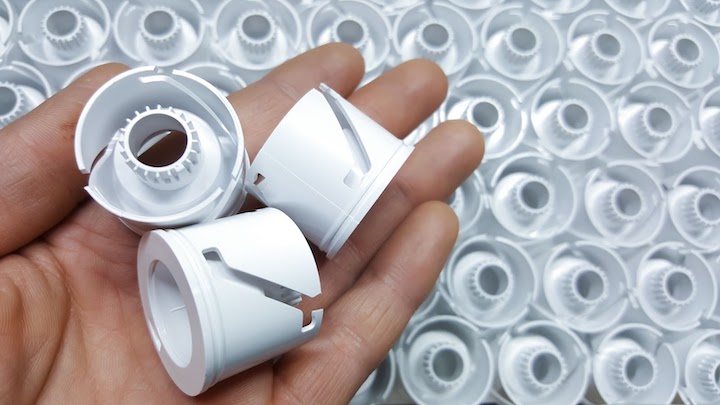
How can you tell if your part design has undercuts in the first place? Imagine your part atop a glass table. One light shines on your part from above and another light shines on your part from below. If light hits every surface of the part, then there aren’t any undercuts. If some of the part is shadowed, however, then those shadowed areas are undercuts.
Plan Better Snap Fits
Snap fits are injection molded features that are often used in product assembly. Check out the two snap fits in the image below.
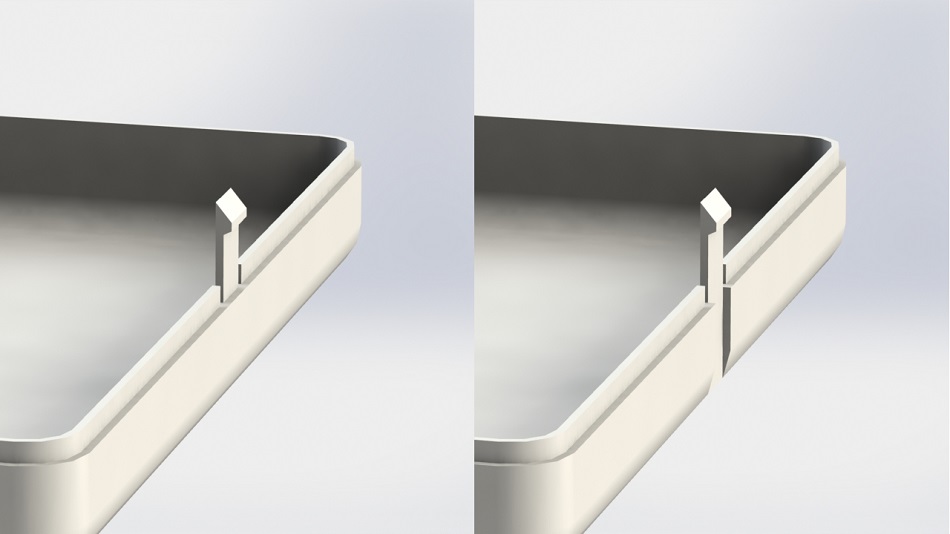
The snap-fit on the left is problematic because it won’t support the use of a simple (and less expensive) mold. That’s because the underside of the snap fit isn’t accessible. In other words, the lower section of the plastic case gets in the way.
There’s a way to address this, however. As the snap-fit on the right shows, it’s possible to remove some material from the case without adversely affecting the design. This makes it possible to mold the snap-fit using a simpler and less expensive tool for easier part release.
Add Draft Angles and Fillets
Along with undercuts, there are certain geometries that complicate the release of injection molded parts. For example, straight sides that are in the same direction as the mold pull are difficult to eject. The solution is to add a slight draft angle to the part’s sides — note that parts with long straight sides need larger draft angles. This taper is barely noticeable, but a few degrees make big a difference when ejecting parts.
Like straight sides, sharp corners also get stuck in the mold during part release. The solution is to use rounded corners or fillets instead of sharp angles.
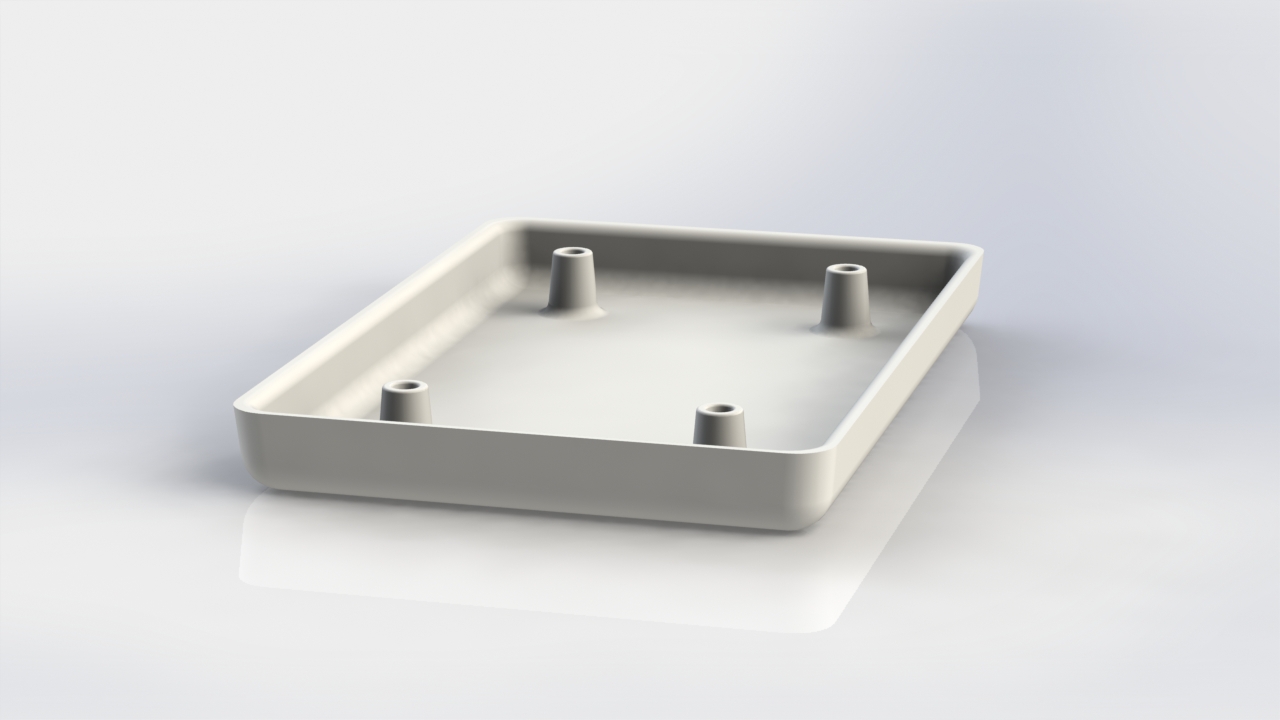
There’s an exception to this rule — if the corner is on the parting line, then you can keep that corner sharp since it’s formed by the two halves of the mold.
Consider Wall Thickness and Cooling
The thinner and thicker areas of an injection molded part cool at different rates. Thinner areas cool and harden first, and thicker areas take longer. If there’s a significant difference in wall thickness, sink marks can occur. These injection molding defects happen when the center of a thicker section that’s still cooling pulls down the surface of a thinner section that’s already cooled and creates an unappealing surface divot.
Injection Molding Complex Part Geometries
Like 3D printing, injection molding can support products like the head of this special golf club.
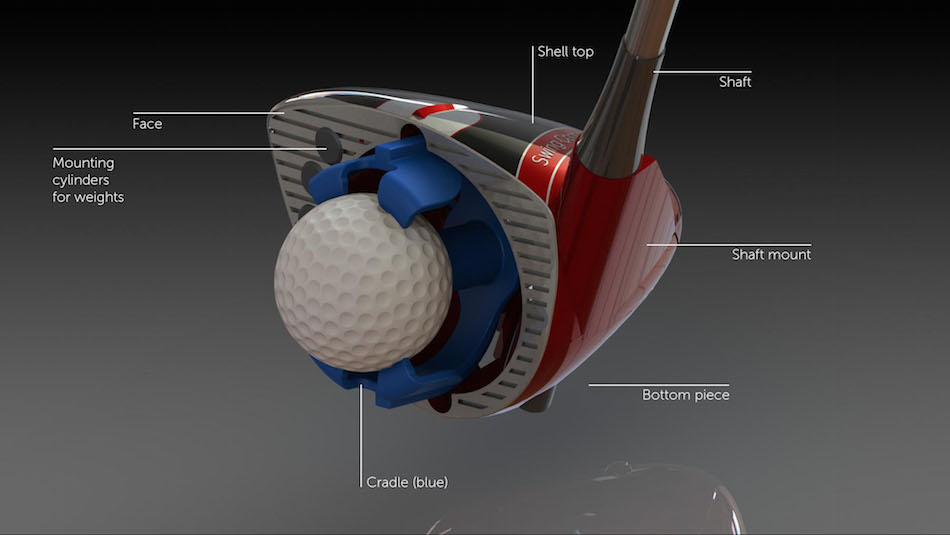
With 3D printing, you can produce the entire head as a single piece. With injection molding, however, it doesn’t make practical sense to try. Why? It’s because you’d need a mold with many different types of actions, and that would add significant expense to your project. In other words, design for manufacturability (DFM) suggests taking a different approach, called sectioning.

Section Complex Part Geometries
Instead of trying to mold the entire head of the club as a single piece, you section it into three separate pieces: face, bottom and shaft, and top of the shell. After these three pieces are injection molded, they can be ultrasonically welded together. This secondary process adds costs, but those costs are a lot less than what you’d pay for complex tooling. Also, because sectioning is such a drastic design change, you’ll need new 3D-printed prototypes to test your three-part geometry and ensure there’s enough clearance between the parts to assemble them. For best results, use a 3D-printed material that’s as close as possible to your future injection molding material, especially in terms of tolerances and surface finish.
Many injection molded parts have commercial tolerances and smooth surface finishes. With 3D printing, the closest you can get to these conditions is PolyJet technology, which can also approximate the strength and stiffness of injection-molded plastic parts. You may need to adjust and re-test your sectioned parts, but 3D printing readily supports prototyping revisions.
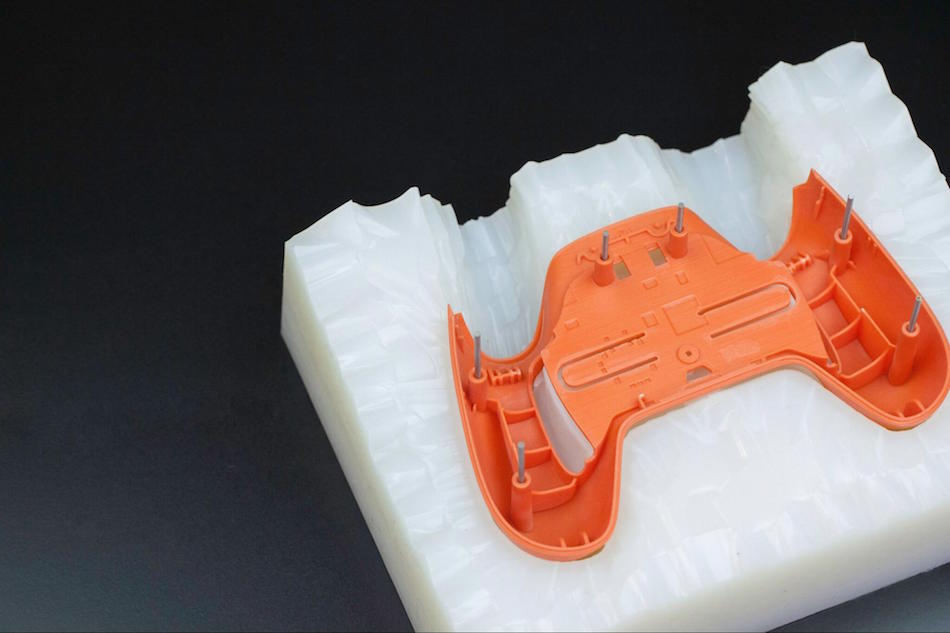
Low-Volume Injection Molding vs. Urethane Casting
Now, let’s say you’re planning an initial production run of 250 parts. Low-volume injection molding can produce a few hundred up to tens of thousands of parts. Plus, low-volume molds can be cost-effective — Fictiv offers low-volume molds made from aluminum, and soft and semi-hardened steels.
What if you want to minimize your tooling costs? With a 250-part initial run, urethane casting is a great choice — it still uses tooling, but the molds are made of non-metal materials that cost significantly less. Typically, urethane casting is used for runs of parts in the 20 to 500-piece range.
Scale Up from 3D Printing to Injection Molding with Fictiv
Fictiv provides engineers with a faster, easier way to order high-quality injection molded parts. When it’s time to scale up from low-volume 3D printing to high-volume injection molding, you’re bound to have questions about design and manufacturing. Our molding and printing experts have the knowledge and skill to help you optimize your designs and make the transition smoothly, so don’t go it alone. Create your free Fictiv account, upload your part drawing, and let us help you make the move to injection molding!










